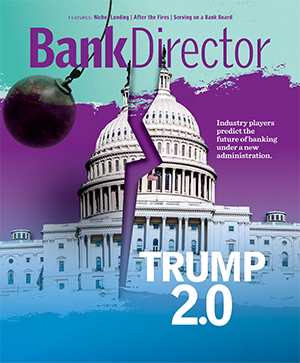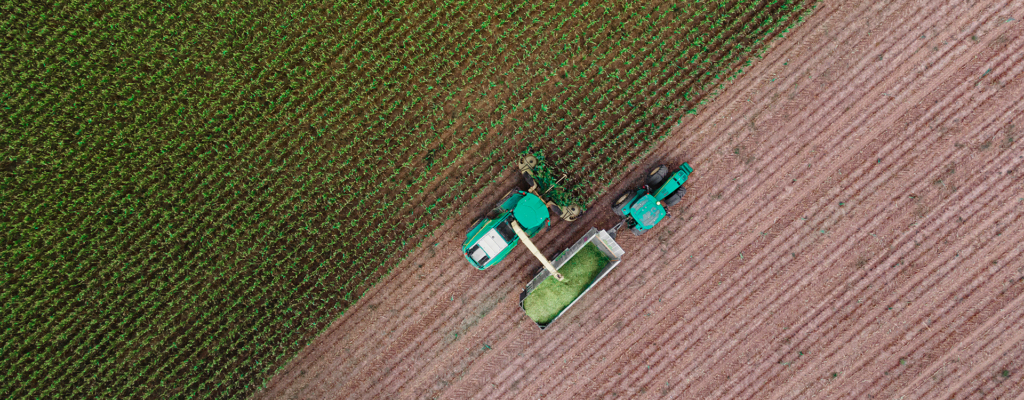Ag lending is one of the most rewarding areas of finance. For many in this business, it’s more than just a career — it’s an opportunity to honor and support a way of life.
Ag lenders often have deep roots in agriculture. Some even own their own operations. They understand the challenges farmers face better than anyone, which is why farmers and producers turn to them for guidance and support.
Like any industry, agriculture comes with significant challenges. Farmers face rising input costs, fluctuating commodity prices and increasing pressure to enhance productivity — trends highlighted in McKinsey & Co.’s report Global Farmer Insights 2024. These challenges can strain even the strongest lender-farmer relationships.
One solution to these financial strains is simple — flexible financing that leaves farmers with more working capital to navigate these roadblocks.
The way, however, is difficult. Operating outside of traditional loan structures can undo the protections they were designed to provide for lenders and other stakeholders.
The good news is that lenders can tap into innovative solutions to create a win-win scenario, allowing them to sustain these critical relationships, starting with secondary lending.
Staying Competitive While Reducing Risk
To provide an example, Bob Johnson is a fictional dairy farmer in Wisconsin who is looking to purchase 150 acres of pastureland and upgrade milking equipment to increase output and efficiency. Joe Smith, his longtime ag lender at the local community bank, drew up an offer that included:
- A loan of $1.5 million for land purchase with a 20-year amortization cap and a 7.25% fixed interest rate.
- A balloon payment due at the end of the term, requiring refinancing or a lump-sum payoff.
These terms come standard because they help Joe’s lending institution protect liquidity and manage risk exposure while complying with regulatory lending limits. Shorter terms with balloon payments also allow banks to reassess creditworthiness and adjust loan structures.
However, these terms may not meet Bob’s business needs. To support long-term growth, he’s looking for better rates, extended terms and lower payments — solutions that leave him with more working capital to help him cover expenses and scale his operation. If Joe can’t come up with a solution, Bob may have to look elsewhere.
Secondary Lending Bridges the Gap
Offering more competitive lending products puts banks between a rock and hard place. They’re faced with either tightening their lending standards or charging higher interest rates. Either would make borrowing more expensive and less accessible for farmers.
But that’s not the case if the lender partners with a secondary lender.
Secondary lending offers community ag lenders the best of both worlds. Lenders can offer competitive lending products without taking on the risk, and farmers can plan long term and invest in their venture’s growth.
Lenders that partner with a secondary lender can offload the loan, reducing portfolio concentration risk. Instead of losing farmers to larger lenders, community banks can keep relationships in-house
With secondary lending, banks can offer more competitive terms and more flexible options. Leases, scorecard options and low-principal loans give local banks the tools to compete with bigger financial institutions while still serving local farmers.
How Secondary Lending Delivers Competitive Terms
In Bob’s original offer, the bank’s 20-year amortization cap resulted in higher monthly payments that created cash flow constraints.
By leveraging secondary lending, Bob can get access to a loan that’s structured to meet his needs. Here are two possibilities:
1. A 30-year term that reduces his monthly obligations and provides greater financial flexibility.
2. A 1% reduced cash flow product that allows Bob to ease into payments in the early years of the loan, giving him the opportunity to reinvest in his business.
Secondary lending gives Joe and Bob a win-win scenario. Joe can present a more competitive lending package for Bob’s dairy operation, while offloading the risk from his financial organization.
That’s how innovative solutions like secondary lending helps ag bankers like Joe expand their ag loan capacity.




